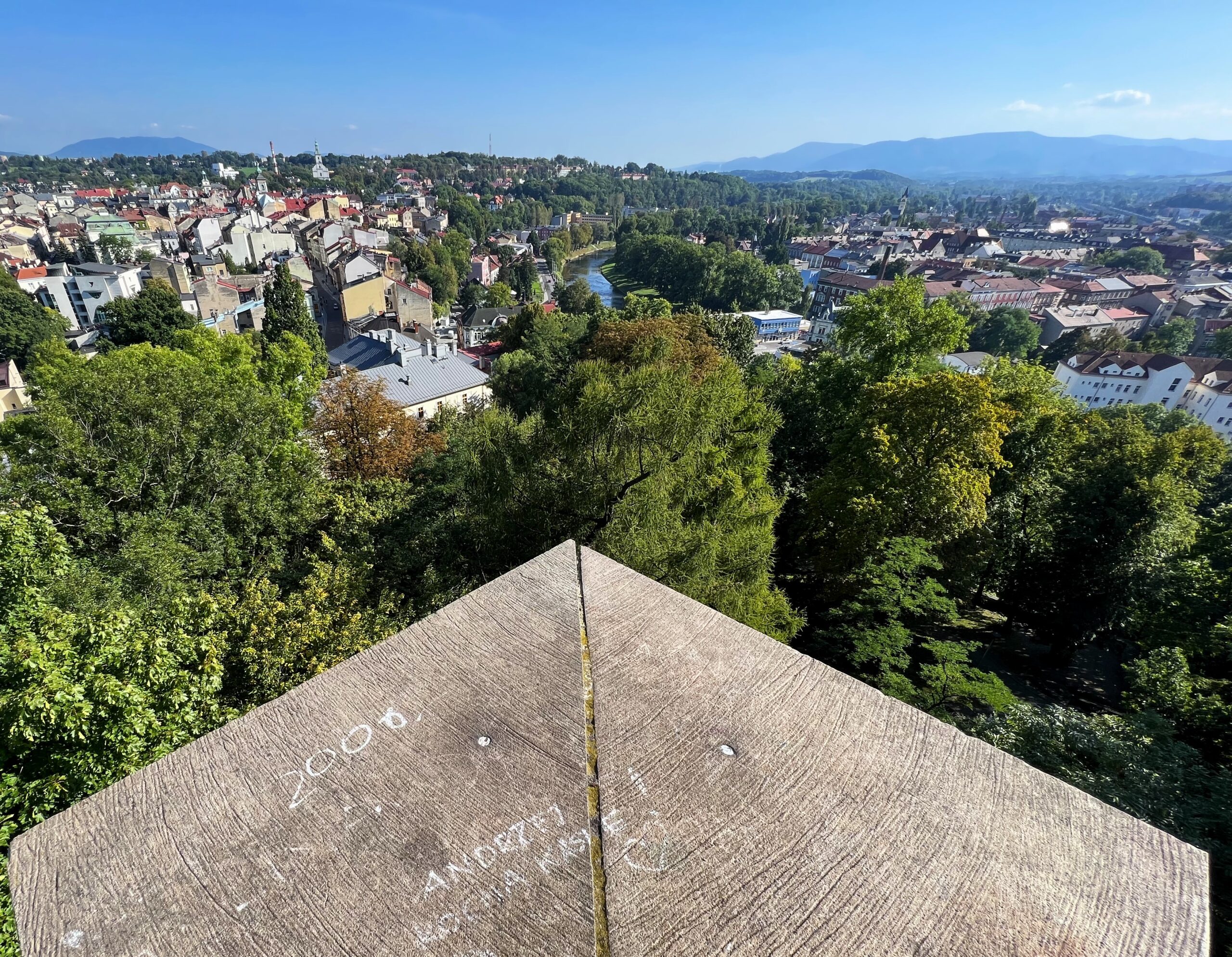— The fable here is that a thousand years ago three brothers (Leszko, Bolko and Cieszko, western Slavic dukelings) found a spring, and so founded a town, along the Olza or Olše river (depending on whether Polish or Czech) in Upper Silesia as the foothills of the Beskids slide into the Carpathian Mountains. This town is called Cieszyn: at its highest point the 14th-century ruling Piast dynasty built a castle with 30-meter defensive towers. One remains.
And standing on top of the tower, its coarse sandstone like tree rings or elephant skin, you can spot a few things; the border river Olza to the right, the Beskids in the distance, and, off to the upper left, the Bobrek housing estate, begun in the 1980s for Silesian coal miners who soon would have no more mine to go to, nor state housing authority to finish up the project. That’s where we’re heading.
Also noticeable: in either 2000 or 2006 a fellow named Andrzej apparently left a heart on top of the battlement.

— Mining families never really did move into Bobrek, built on the site of what was a village, until the villagers were displaced to make way for the housing estate. The sharp break to market capitalism meant large swathes of Silesian mining shuttered. But other families did move in, now a generation or even two on, and Bobrek (the name of which may or may not derive from beaver) is now home for hundreds of residents, bordered by a green belt and tall trees.
Walking around it in the afternoon is quiet and calm.
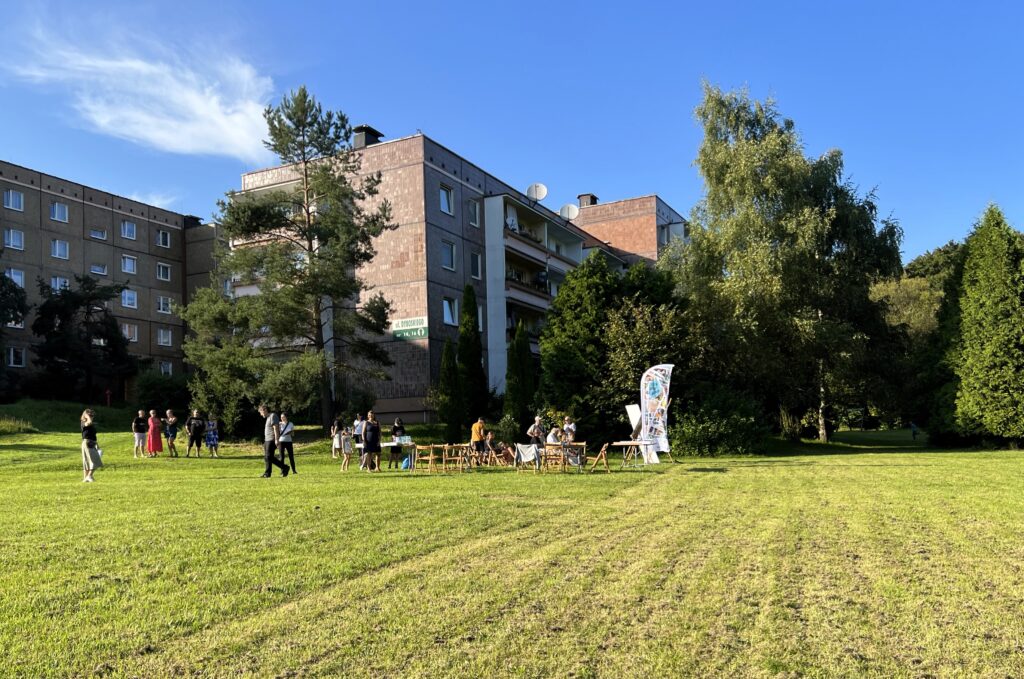
— But there are many ways across Europe to be a small and remote place, and here is one: Bobrek’s planned amenities were never really finished, and while green, the estate sits at the top of a hill with a narrow cracked road leading in and out. Fine if you have a car into town. A little less fine by bicycle or on foot. Bus service? Slim. If you are older—and Bobrek is greying—you’re not leaving much. You are isolated.
And residents have differing wants and needs for the space. Enough so that the Smoties partners at Cieszyn local government-sponsored culture and design development outfit Zamek Cieszyn is mediating among them over local sandwiches and outdoor roundtables here on a sunny September afternoon.

— Youths want a place to meet, something more to do, maybe an exercise area. The football pitch looks good from here, but hard to play on: divets, holes, ankle-twisters. Basketball court is unmaintained concrete: works, but it’s loud. And shift workers want quiet outside their windows.
It can be tense discussion, over months; at least it’s ongoing conversation among neighbors. Even if there is agreement, it remains to be seen if there’s money for it. For now? Some new benches, tables, rubbish bins.
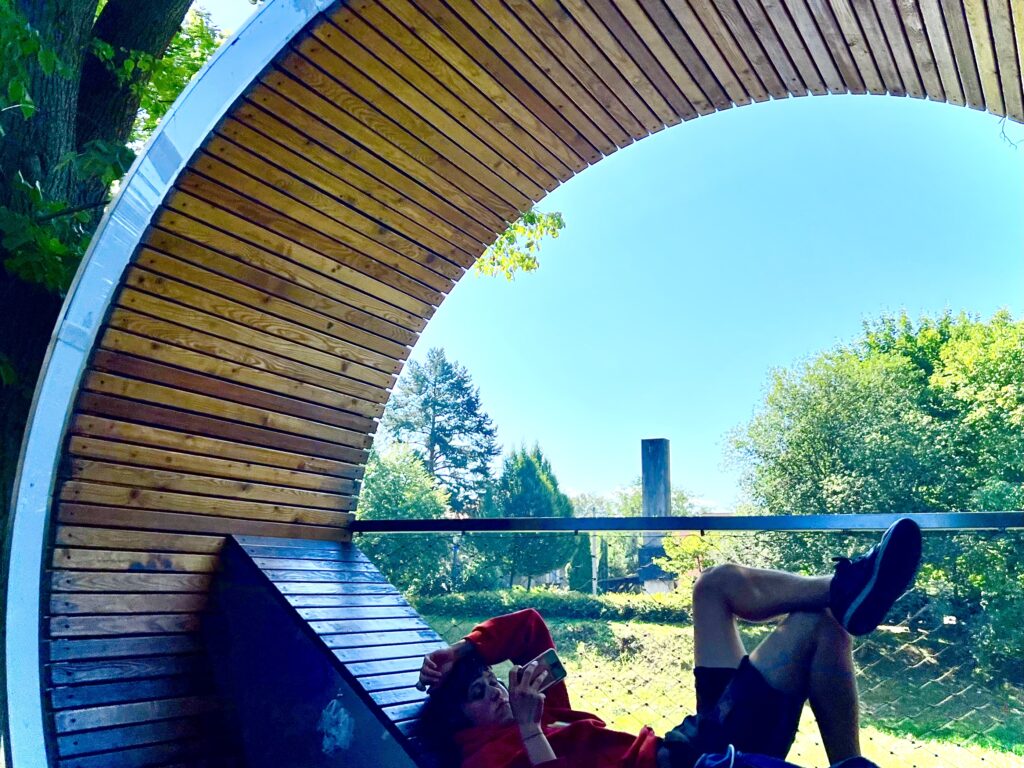
Down the hill from Bobrek on the Olza riverbank, a set of seven oversized rings designed by RS+ Robert Skitek make up part of the EU-funded open air museum, a joint project between Cieszyn and Český Tĕšín, the Czech town across the border. Also a place to relax. Or look at phone.
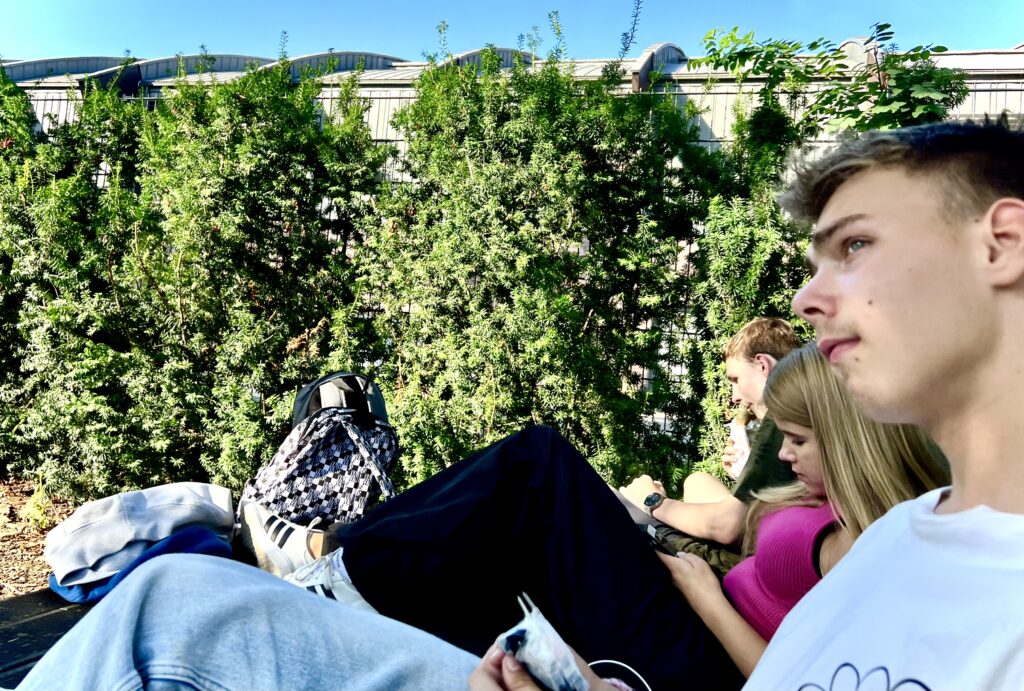
The riverbank is a natural afterschool and weekend hangout for Cieszyn’s young people, studious, goofy, giggly, and pensive. Natural enough: today is a lazy breezy afternoon by the water, but not far so away from here are darker currents of a grimmer Europe, past and present.
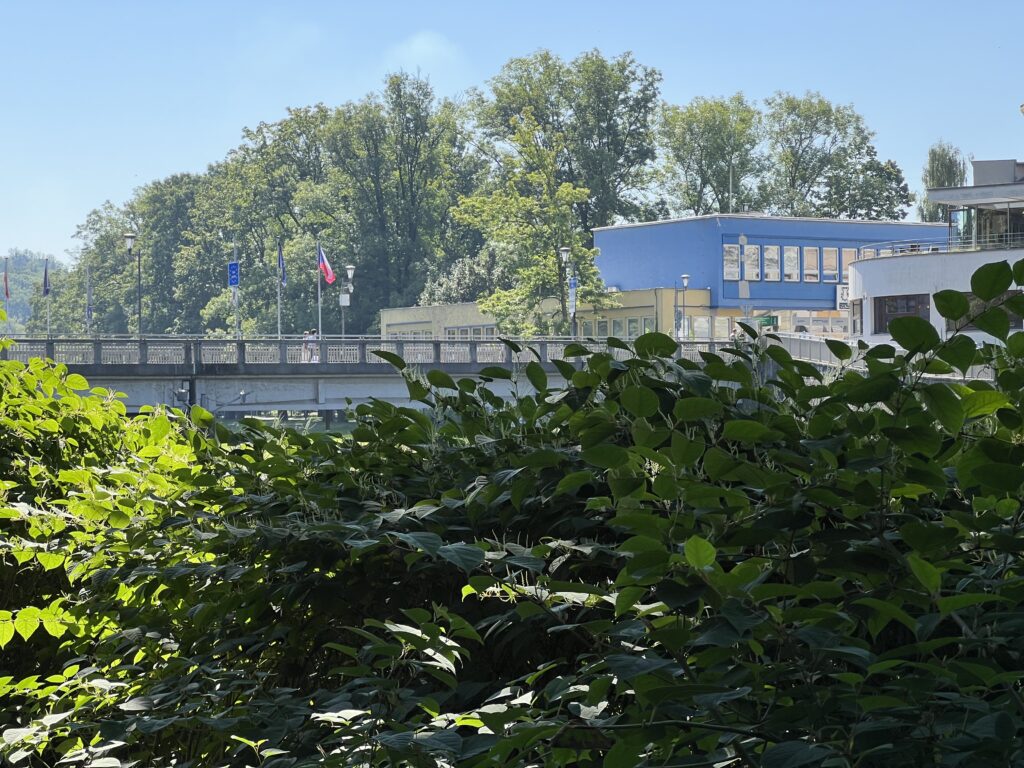
A little further down the road is the bridge across the border: can walk right across, and in no time be on an arrow-straight main street with a succession of border-town discount enterprises.
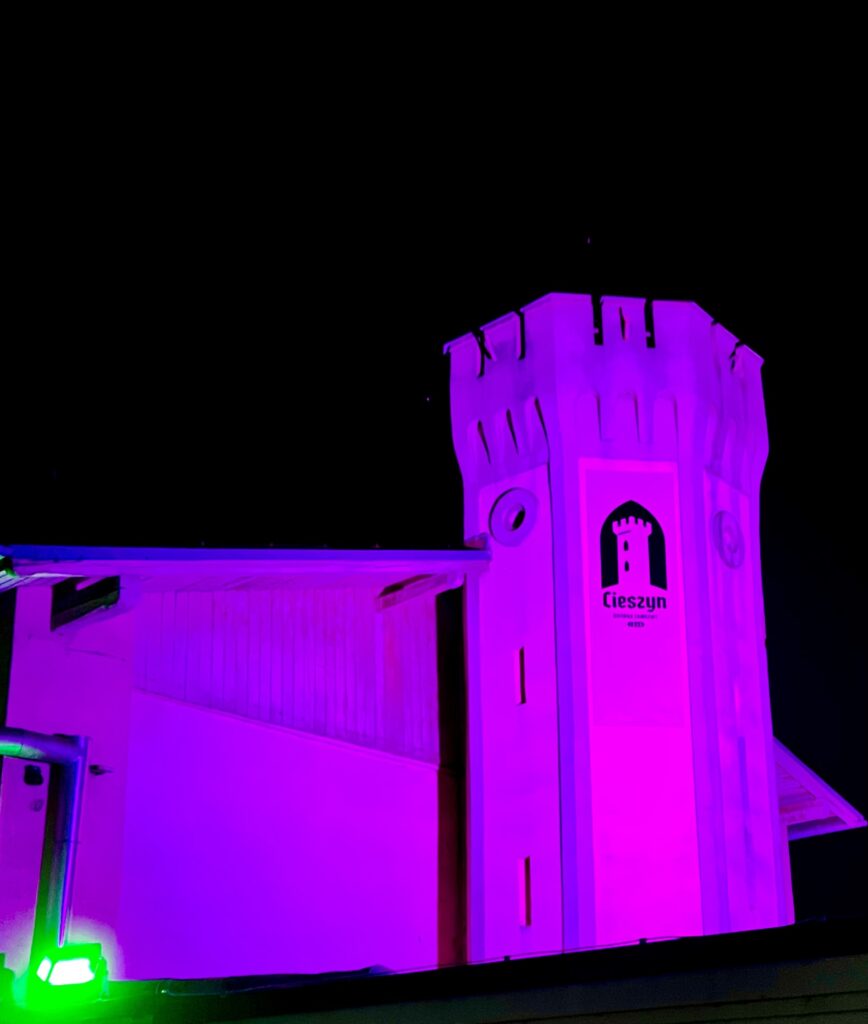
Zamek Cieszyn is between the Piast tower, the state school of music, and this: Arcyksiążęcy Browar Zamkowy w Cieszynie, Cieszyn’s Castle Brewery, founded 1846 and still making a mighty fine pilsner.
It also is the main sponsor of an annual two-day music festival, featuring Polish acts for the most part, jazz and goth and pop and DJs alike. On this weekend the place lights up, the sprawling brewery grounds are set up…
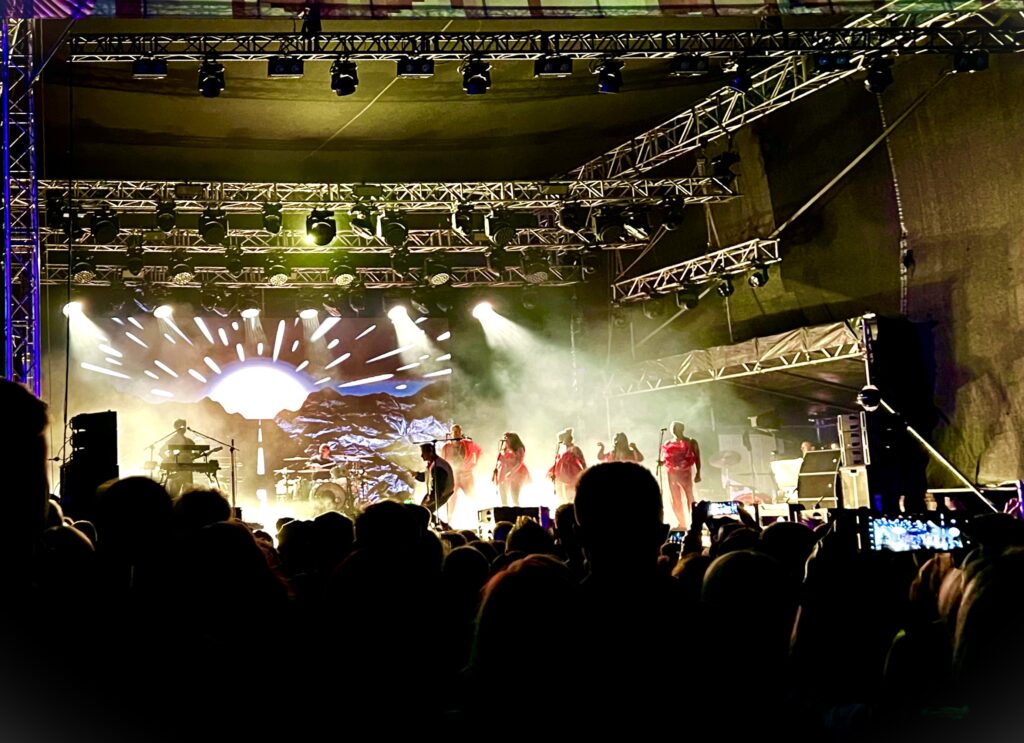
…and Yass! festival takes over. Here Lublin idol Krzysztof Zalewski heats up the warehouse stage, boldly sporting a red, white, and blue sequined bomber jacker and supported by five background singers in salmon boas.
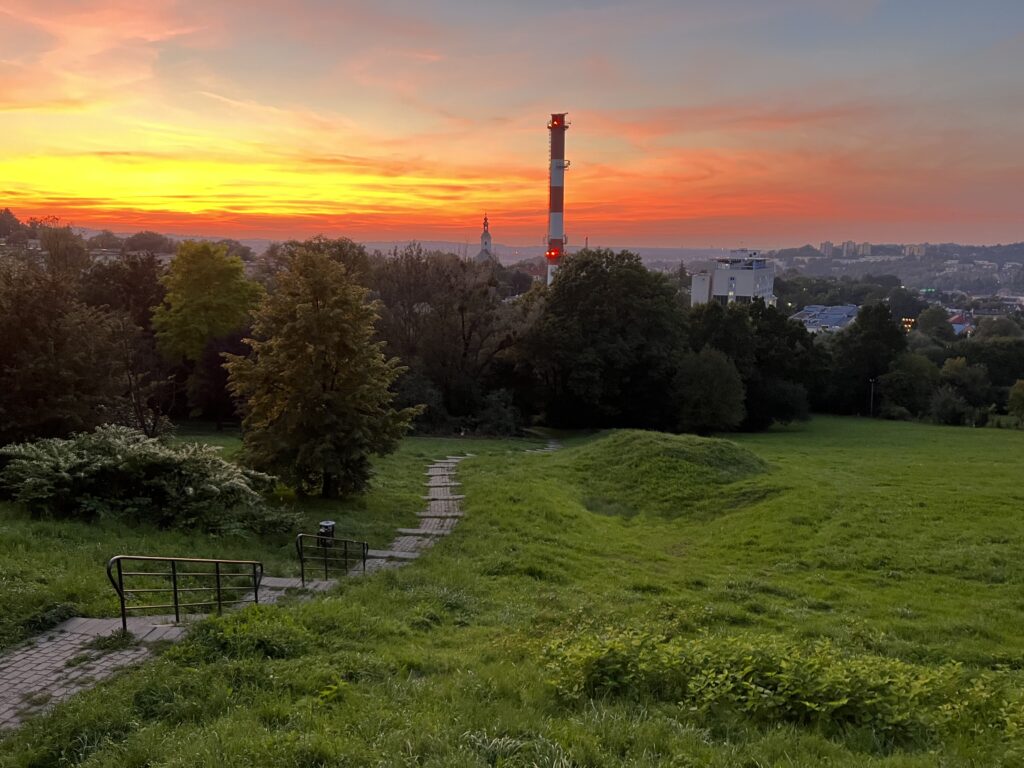
As sun sets on the scruffy and charming Miejski Park (and a local power source), we say good evening to Cieszyn and get ready to head further north and east, to the deep coastal woods on the Baltic coast of Estonia.
